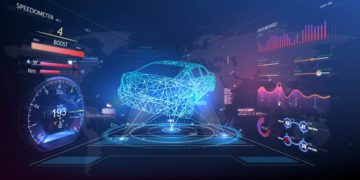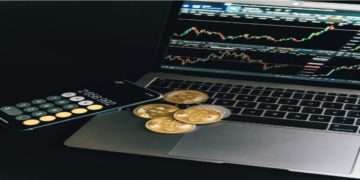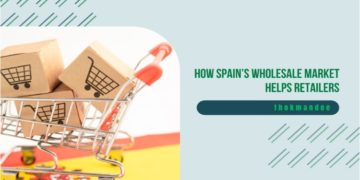The global e-commerce sector has undergone changes at a rapid, dizzying speed as values surge or drop and new trends emerge. Gone are the days when customers relied on static websites and manual checkouts. Instead, there has been a shift towards frictionless commerce through deep technology integrations, with even some unconventional sectors jumping on the bandwagon. As such, 2026 will redefine e-commerce on a global scale, with incremental growth no longer being the defining factor. From invisible AI to hyper-localised logistics, four main areas are going to help in separating the laggards from the leaders.
The Current Digital Pulse: Today’s Defining Trends
To better understand how 2026 trends will emerge, it is important to analyse the current e-commerce landscape. For one, current market trends all have one thing in common: convenience, speed, and low friction. This demand has led to more immersive shopping experiences with the integration of AR (Augmented Reality) technology to enhance customer interactions. Previously, shopping online was frustrating as consumers did not know how certain clothing items would fit, or what makeup shades they were purchasing. Returns were at an all-time high.
AR shopping fixes this, allowing customers to try on clothes and test make-up before checking out. Social media shopping is another new trend. With TikTok Shop and Instagram Checkout, a purchase can be made without users leaving their social feed. Even the crypto sector has been impacted, with sites like bitcoin hyper ensuring buyers can unlock faster and cheaper bitcoin transactions. Potential investors can purchase crypto from their preferred exchange or use the official site to participate in $HYPER crypto presales, pay, and quickly receive the tokens in their wallets. The Layer 2 solution guarantees near-instant finality, perfectly encapsulating the convenient and low-friction sales that define today’s e-commerce market.
Trend 1: The Rise of ‘Invisible’ AI-Driven Commerce
Currently, it is very obvious when a shopping or e-commerce platform is using AI. Going forward, there will be a shift away from this obvious integration to a silent, invisible operational force. An instance of this might be the removal of AI chatbots, but an increase in hyper-personalised product recommendations. These will come as a result of Predictive and Autonomous Commerce, which will track individual consumer patterns and browsing. To give a specific example, a customer might purchase coffee pods at the beginning of the month, and this tech will keep track of that.
It predicts that by the end of the month, they might have run out (or are about to run out) of pods, so they receive a personalised ad. Alternatively, this could also come as a reminder of when certain products are restocked at the warehouse. Further AI-driven optimisation will see dynamic pricing where a product’s price might be adjusted in real time based on local demand or competitor stock. Landing pages, marketing copy, and other imagery will incorporate generative AI to personalise content for individual consumers clicking in.
Trend 2: Omnichannel Truth: The Death of the ‘Channel’
Based on how platforms today are aiming for maximum convenience and simplicity, it is only a matter of time before online shopping becomes omnichannel. As opposed to having separate apps, websites, or physical stores, the distinction between these will all be erased. With a Unified Data Layer, retailers can provide instantly synchronised updates whether a user is in-store or on their phone.
This would be useful for communicating inventory levels, customer loyalty point updates, and personalised offers. To achieve this, retailers would need to use Composable Commerce technology that will unlock plug-and-play tools (via APIs) for a particular function. Think of it this way: one tool is used for checkouts, while another is used for AR or analytics, which means unprecedented agility and speed-to-market. This way, even click-and-collect services can become truly seamless.
Trend 3: The Sustainability Imperative and Green Speed
An increase in ethical consumers has further impacted e-commerce globally. Sustainability is in demand and has become a non-negotiable entry barrier for retailers. In turn, 2026 will see a rise in transparency, where full supply chain visibility will be offered to consumers on each website. This can include labels that clearly disclose where raw materials are sourced from to ensure it was ethical.
A rise in carbon footprints that display the estimated emissions for the product, alongside its delivery, will become the norm. Of course, this won’t come without its challenges. Specifically, logistics-wise, the new gold standard is “Green Speed”, meaning customers want carbon-aware fast shipping. AI-powered route optimisation can reduce fuel consumption, while investments in more expensive options can achieve fully carbon-offset delivery.
Trend 4: Global Scale Meets Hyper-Local Delivery
With more consumers opting for cross-border purchases, it only makes sense for international websites to provide a localised experience. This would entail going beyond basic translations into the targeted language, but actually aligning with local payment methods, holidays, and culture. Adopting local payment rails alongside specific regional BNPL plans can help build user trust and retain customers.
Ensuring product imagery and marketing campaigns are tailored to be respectful of local cultures and inclusive of provincial/religious holidays is becoming crucial. When using platforms like Shein or Temu in a country where it is summer, then the products being recommended should echo this. e-Commerce will also lead to a B2B (Business-to-Business) convergence, closing the B2C (Business-to-Consumer) gap for good.
Conclusion
AI, Omnichannel, Sustainability, Localisation; the core trends for 2026 all have one thing in common: reducing friction. Retailers will need to ensure customers can go from wanting a product to owning it in as few steps (in the fastest time) as possible. Naturally, this also means clearing the consumer’s conscience and guaranteeing that the environment is being respected. Businesses that treat e-commerce as a predictive, and nearly invisible utility (with the intent of making life easier) will come out on top.
David Prior
David Prior is the editor of Today News, responsible for the overall editorial strategy. He is an NCTJ-qualified journalist with over 20 years’ experience, and is also editor of the award-winning hyperlocal news title Altrincham Today. His LinkedIn profile is here.












































































